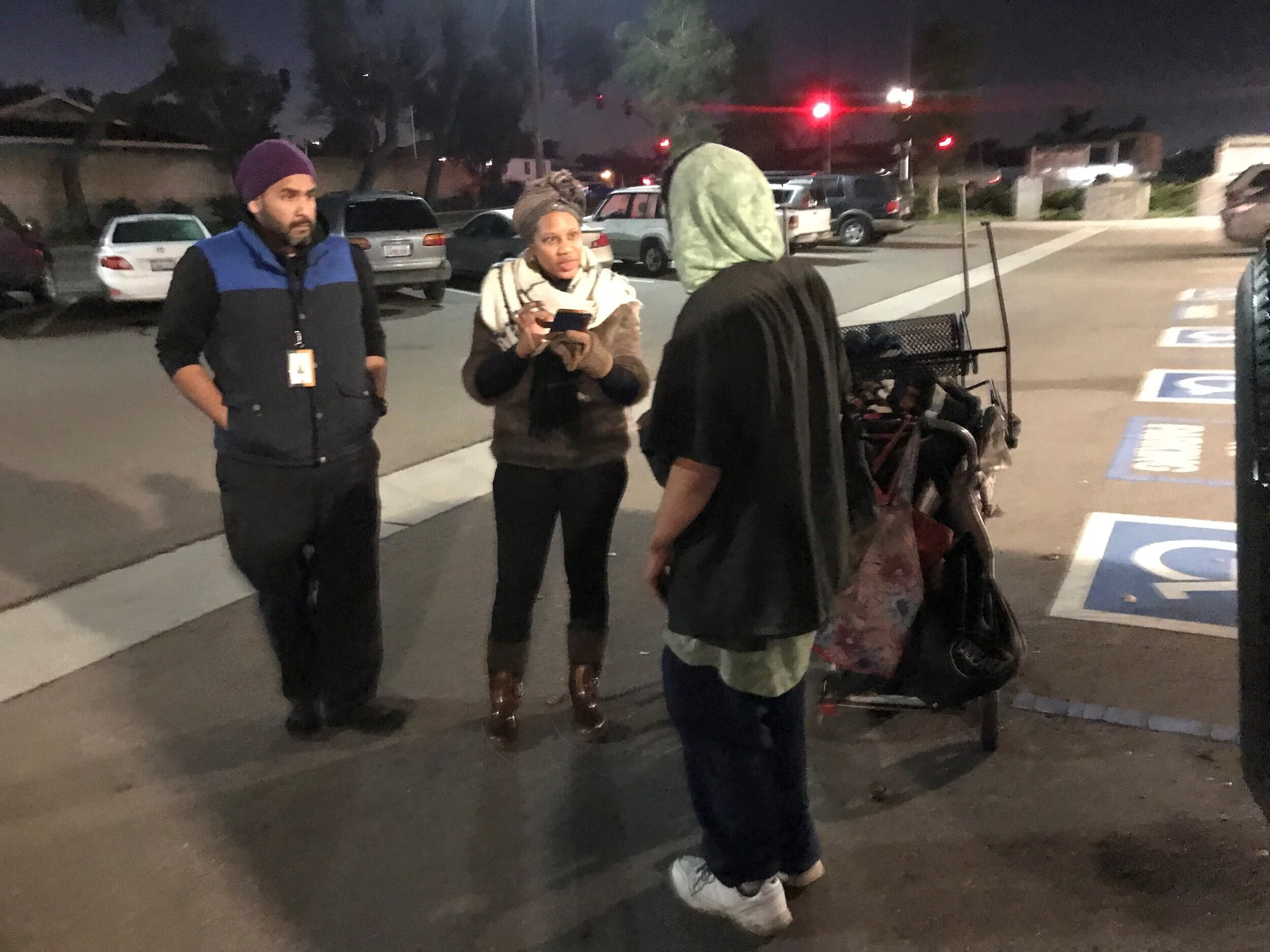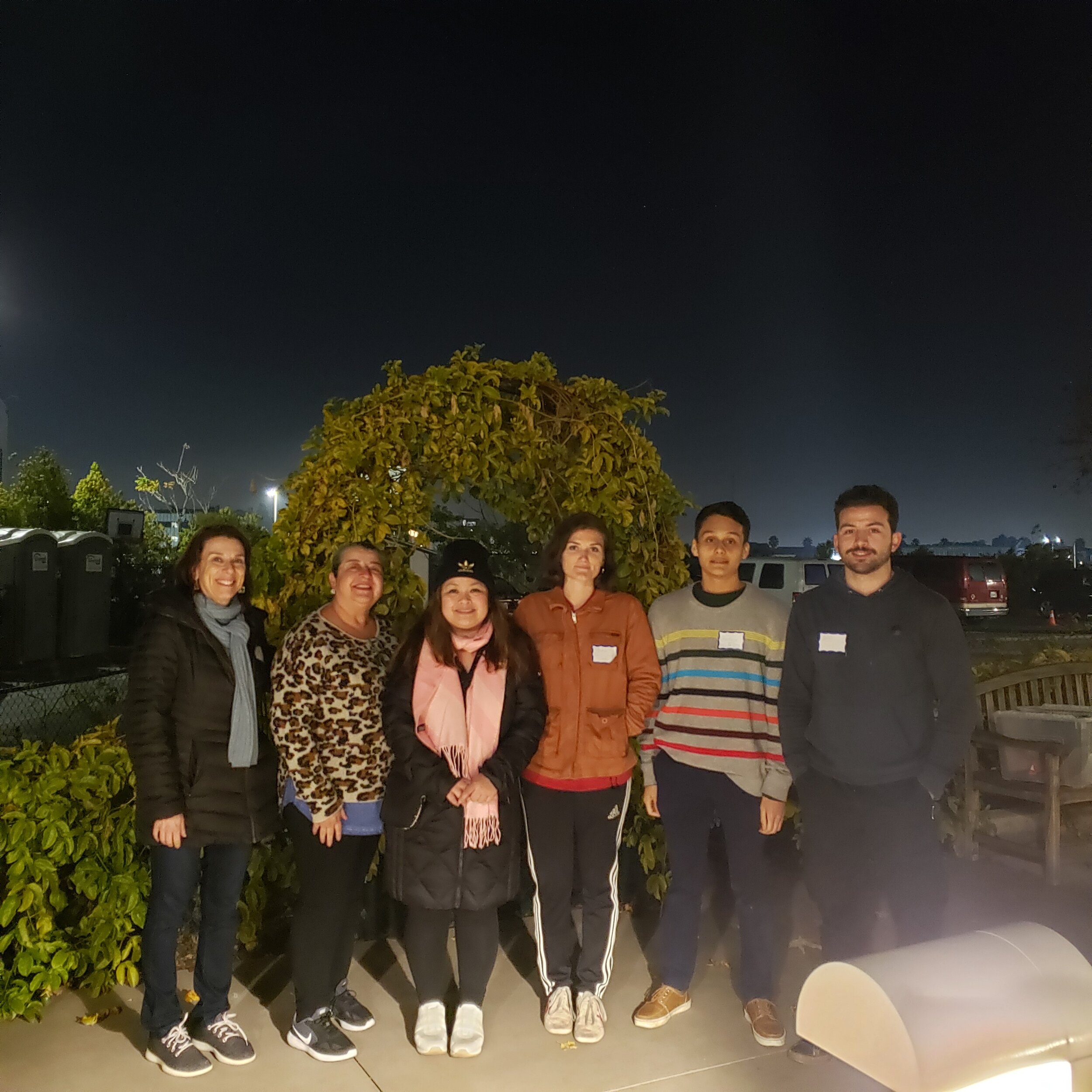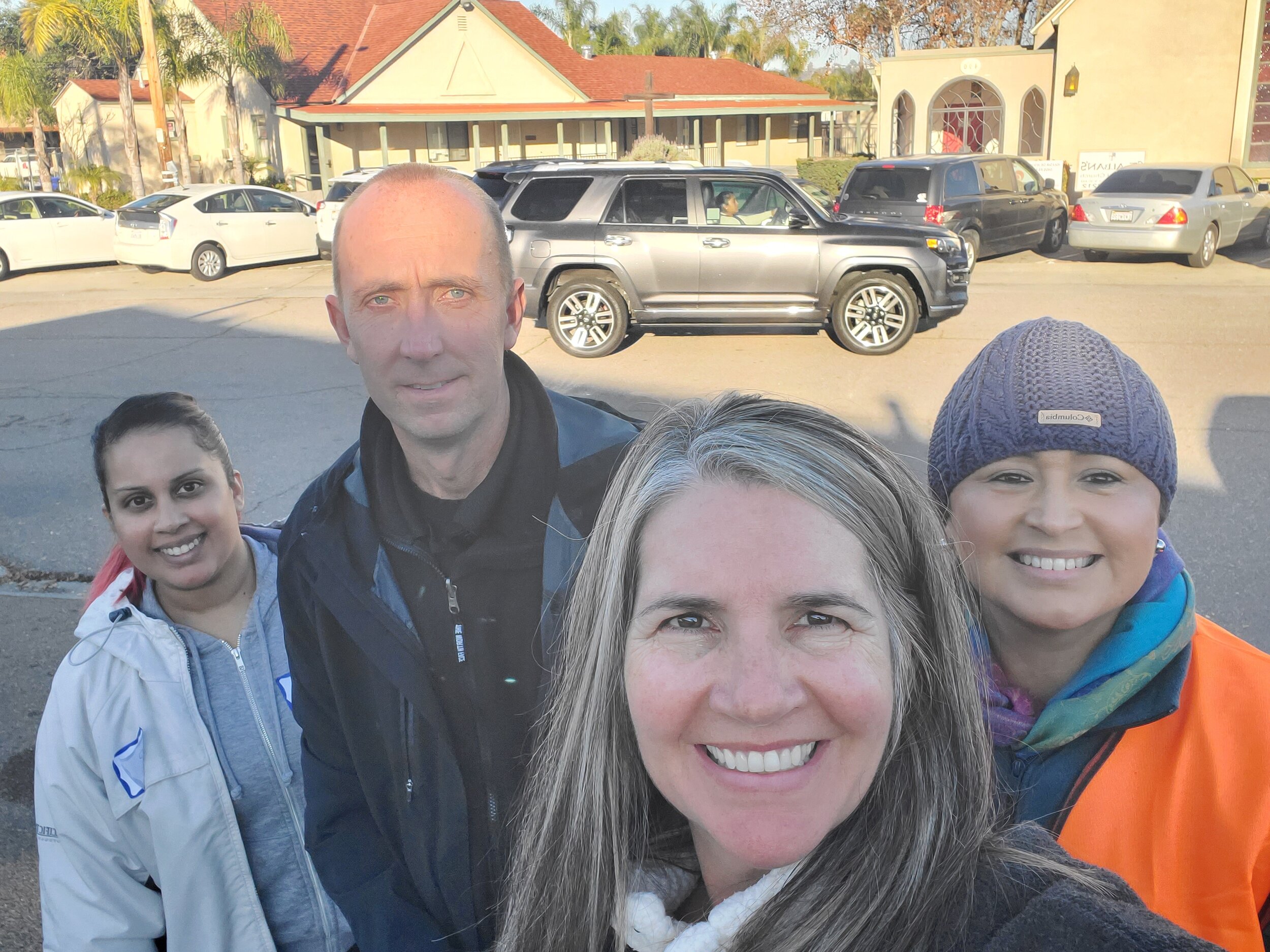560 County Employees Volunteer for Point-In-Time Count
/They typically start working at 8 a.m.
But today, it’s barely 3:30 a.m. and Ruby López, Rosanna Robledo, Veletia Kennedy and Bridget Nathan are already at the LGBTQ Center ready for their first task of the day: counting and surveying people living on the streets.
The group, all office assistants at the Document Processing Center of the County Health and Human Services Agency, is one of several groups who counted and talked with people experiencing homelessness in North Park, Hillcrest, University Heights and Mission Hills.
County employees Rosanna Robledo, Bridget Nathan, Rubi Lopez and Veletia Kennedy speak with Jody, who has been homeless for 10 years and has a physical disability.
The HHSA employees were assigned to the North Park area and, for four hours, they counted people from University Ave. to Upas St. between Arizona Street and Grim Ave.
The annual Point-in-Time Count is spearheaded by the Regional Task Force on the Homeless and provides a one-day snapshot of people living on the streets or in short-term shelters. The results of the count and survey are used to apply for federal and state funding to help people experiencing homelessness and find solutions on how to best serve this vulnerable population.
This year, more than 1,600 people — 560 of them County employees — volunteered for the count, which offered people who agreed to answer questions a pair of white socks and a $10 gift cart to Starbuck’s or McDonald’s.
While in previous years volunteers used paper surveys for the count, this year they used the Counting Us app, which registers the data electronically and captures the exact location of each interaction.
The first person they encountered was an older white man carrying two black garbage bags with recyclable cans and bottles.
“I am busy working,” he said while he continued hurriedly walking along Upas St. and Grim Ave. The counters clicked on the app’s Observation Tally which marked the location he was at.
Less than a block away, they came across Anwar a 32-year-old from Ethiopia who he does not remember how long he’s been homeless but said he is addicted to meth.
Most people they encountered agreed to answer all the questions. Some answered just a couple questions. Others did not wake up.
County employees have participated in the homeless count for the past seven years after Board of Supervisor Chairman Greg Cox brought the issue to the Board of Supervisors, which agreed to allow employees to participate in the count and get their regular pay.
HHSA employees speak with an unidentified man sleeping outside a storefront on University Avenue.
Lopez, who’s been working for the County for two years and volunteered for the count two years in a row, said she decided to participate after Robledo encouraged her to do it.
“This is a worthwhile cause,” said López, adding that on two occasions — as a child and as an adult — she found herself without a stable place to live. “I know what it feels like.”
Kennedy has also been at the County for two years and, this too, is the second year she’s volunteered.
“It’s passion for me to help people who are homeless. So, any opportunity I have, I’ll do it,” Robledo said. “It’s important for us to get an accurate count.”
Last year, the Point-In-Time Count showed that 8,102 men, women and children were living on the street or in shelters, compared to the 8,576 counted in 2018.
Of the 8,102 people experiencing homeless in the region, 3,626 were living in a shelter during the count last year compared to 3,586 in 2018.
Addressing Homelessness
The results of this year’s count won’t be available until this spring; however, the County has multiple programs in place to connect people experiencing homelessness to services they need and to help them find a home.
Did you participate in the Point-In-Time Count? Tell us about your experience by commenting below and share your photos.
Over the past few years, the County has made significant investments in outreach, treatment, and housing services. The County has greatly expanded critical services since the beginning of the Affordable Care Act. During fiscal year 2019-20, the County will be spending $712.9 million on mental health and substance use treatment programs and services.
County efforts include:
County employees Rubi Lopez and Rosanna Robledo speak with an unidentified man. “Thank you for your smiles,” he said as he continued collecting cans and bottles.
Project One for All — Aims to get persons experiencing homelessness that have a serious mental illness off the streets and into treatment. Since the program began, 1,243 people have been housed with treatment.
Whole Person Wellness — People who are homeless and frequently use emergency rooms receive care coordination to help them find housing and engage in services to address their physical and behavioral health needs. Over 600 people have been enrolled with 203 permanently housed with supportive services.
Community Care Coordination – County is working with frequently incarcerated persons with serious mental illness to provide housing and care coordination to improve their outcomes and decrease recidivism.
Supportive Housing —The County has invested Mental Health Services Act housing funds to provide high-quality dedicated supportive housing for clients with serious mental illness and/or co-occurring disorders.
HHSA employee rubi lopez hands out a giftcard to an unidentified man riding his bike in north park.
Affordable Housing
The County is also working to address the affordable housing crisis in the region. Some projects include:
Innovative Housing Trust Fund — The County is investing $50 million to build more affordable housing for a variety of special needs populations including persons experiencing homelessness in the region.
No Place like Home Program — This state funded program will add hundreds of affordable permanent supportive housing units for persons experiencing homelessness that have a serious mental illness in the region.
Identifying Excess Properties for Affordable Housing — The County has also identified six county-owned excess properties that are suitable for development that will include about 800 affordable, multifamily residential units.
Veterans Affairs Supportive Housing — Offers rental assistance to homeless veterans and ongoing VA case management and supportive services. About 1,000 homeless veterans have been housed in San Diego County since the program began in 2009.Additionally, the County spends more than $130 million in U.S. Department of Housing and Urban Development funds every year to help local residents with housing subsidies. Each month, over 10,000 households, which equates to about 20,000 people, receive housing subsidies through the County’s Public Housing Authority.
Together with the Veterans Administration, the County also provides monthly rental assistance to more than 500 veterans and their families through the Veterans Affairs Supportive Housing.







